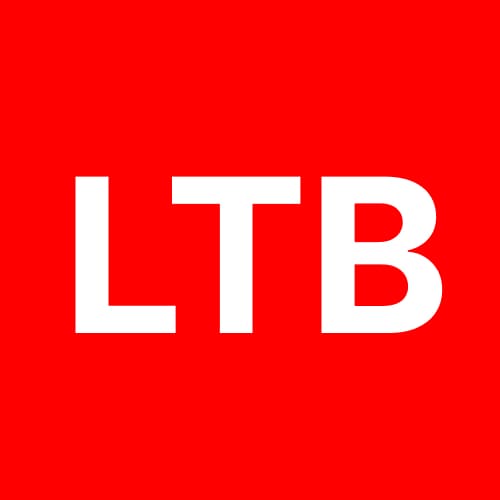
HOME / BLOG / STATISTICS
Local SEO Statistics 2025: 98+ Stats & Insights [Expert Analysis]
- October 22, 2025
- Bill Nash
- 6:10 pm
This article assembles the most up-to-date and relevant statistics for local SEO — not just raw numbers, but what they mean for your business or agency. Whether you’re a local business owner, marketing manager or agency specialist, you’ll walk away with insights, emerging trend foresight and a concrete roadmap to win your local market.
Table of Contents
Local search usage & consumer behaviour
80% of U.S. consumers search for local businesses at least once a week.
32% of U.S. consumers look up local businesses daily.
~46% of Google searches have local intent (commonly cited industry estimate).
Mobile searches with a variant of “can I buy” or “to buy” have increased over 500% in two years.
Mobile searches for “___ near me today/tonight” grew over 900% in a prior multiyear comparison (Google data example).
76% of “near me” searchers visit a related store within a day.
88% of smartphone local searchers visit a related store within a week.
72% of people who look for local businesses online visit a business within five miles.
78% of location-based mobile searches result in an offline purchase (industry aggregated stat).
99%+ of people use the internet to look up local business information (various surveys aggregate near-universal usage).
8 in 10 U.S. consumers search for local businesses weekly.
32% of consumers look up local information multiple times per day (SOCi/Backlinko citation).
61% (or more) of all Google searches are reported to happen on mobile in some sources — mobile is dominant for local intent.
“Open now near me” style queries have surged (examples show 400%+ growth for some variants).
84% of people trust online reviews as much as a personal recommendation (review trust is very high for local decisions).
93% of consumers say online reviews affect their buying decisions for local businesses (aggregated BrightLocal/industry surveys).
41% of consumers will use three or more sites to check business reviews (BrightLocal data).
81% of consumers use Google to find local business reviews.
71% of consumers would not consider using a business with an average review rating below 3 stars.
88% of consumers said they would use a business that replies to all of its reviews (BrightLocal-type finding).
Google Maps, local packs & listings
Local “map pack” (3-pack) dominates local intent queries — being in the map pack drastically increases clicks/visits.
Businesses in the local map pack get far more traffic and calls than positions 4–10 (map pack uplift examples: +100%+ traffic/calls reported in industry writeups).
Google Search and Google Maps are the most frequently used tools for local search.
Over 1.5 billion destinations are visited every month thanks to Google Maps listings (industry aggregated Map usage stat).
Businesses with complete Google Business Profile (GBP) listings are significantly more likely to attract visits and actions.
56% (approx.) of local businesses have not claimed or fully optimized their GBP in some local audits — leaving opportunities.
Listings with photos get many more clicks and actions; quantity & freshness of images correlates with higher engagement.
Accurate hours and “open now” signals drive more on-the-spot visits (searches for open now spikes).
Businesses that manage and update GBP frequently (posts, Q&A, images) show higher engagement vs. static profiles (industry case studies).
On mobile, having a mobile-friendly website plus a complete GBP significantly increases inquiry likelihood.
62% of people would avoid a business if they encountered inaccurate information about it online.
High-performing local brands are much more likely to have an established local marketing strategy (example: 94% of high performers).
Multi-location brands: 91% say local branch reviews impact brand perception.
GBP features like “Products,” “Services,” and booking links increase direct conversions when used correctly.
Local citations (directory mentions) remain a ranking factor; consistency helps prominence.
Map features (directions, phone click) are primary micro-conversions for many local searches.
The combination of GBP + local schema on site improves visibility in local packs and map results.
Businesses in the top 3 map pack positions capture the majority of clickthroughs on local results pages.
Google’s local results increasingly pull data from multiple sources (GBP, Maps, structured data, third-party directories).
Local knowledge panel enhancements (menus, services, booking) increase direct conversions for restaurants and service businesses.
Reviews, ratings & reputation
71% of consumers would not consider using a business with an average review rating below 3 stars.
63% of consumers say seeing mostly negative written reviews would make them lose trust in a business.
74% of consumers use at least two review sites to check a business; 34% use three or more (BrightLocal trends).
88% of consumers are more likely to use a business that responds to all reviews.
Review volume and recency are strong local ranking and conversion signals (BrightLocal/industry guidance).
48% of consumers feel more positive about a business when reviews are from named users (BrightLocal 2024 trend).
Consumers trust reviews from multiple sources — cross-site presence matters.
63%+ of consumers say inaccurate information or inconsistent details on listings reduces trust.
Reviews impact not only conversions but local rankings — a sustained review program is a tactic SEO teams prioritize.
AI tools and chat assistants are being used by some consumers to find reviews, but adoption remains small and changeable year-to-year.
Businesses that solicit reviews through post-service followups see higher review volume and better average ratings.
Review replies that are timely and personalized increase consumer trust vs. generic replies.
Overall star rating remains a fast filter for consumers; being above ~4 stars correlates with much higher conversion.
Consumers increasingly notice if reviews appear overly generic or identical across platforms — authenticity matters.
69% of consumers feel positive about businesses when reviews describe positive experiences (BrightLocal finding).
34–41% of consumers check three or more review sites before deciding (BrightLocal variations across years).
Negative reviews can be opportunities: businesses that reply constructively can regain consumer trust.
Reviews on Google are the most visible and often the most influential for local searchers.
Local business pages with higher review counts are more likely to appear in local packs for competitive queries.
Consumers tend to give more weight to recent reviews vs. older ones — recency influences decisions.
Mobile, voice & “near me” trends
Mobile is the dominant channel for local queries; a majority of local searches happen on mobile devices.
Voice search usage for local business info is significant — many users use voice daily for local queries.
58% of consumers use voice search to find local business info in some surveys.
“Near me” and “near me today/tonight” queries have spiked massively (examples: 500%–900% growth ranges depending on variant).
“Open now near me” and real-time availability queries have surged (reports show 400% increases for “open now” variants).
Local mobile searches that contain purchase intent drive higher offline conversions than general searches.
Voice assistants increasingly read knowledge panel and GBP info — structured/concise business data helps voice results.
Map and GPS integrations (click to call, directions) are core conversion paths for mobile local search.
Consumers expect immediate, accurate info (hours, availability) — missing or wrong data drives abandonment.
Local marketers who optimize for voice and conversational queries see better reach for “near me” traffic.
Mobile users who search locally are highly action-oriented — they often want directions, contact, or to buy.
The growth of AI agents and chat search may change click behavior, but map and local panels remain primary for on-the-ground actions today.
Google Maps “Shopping near me” searches rose 100%+ globally in some reported periods.
Users increasingly combine “near me” + modifiers (open now, delivery, men’s/women’s) — modifier optimization helps match intent.
Local schema markup + concise GBP descriptions improve the chance of being used by voice assistants.
Business adoption, strategy & ROI
58% of businesses don’t optimize for local search; only ~30% have a formal local SEO plan (industry surveys).
56% of business owners manage local SEO themselves; 25% have someone on staff do it (Semrush/industry data).
Local SEO commonly delivers strong ROI; example estimates show multiple dollars back for each dollar spent (example: ~250% ROI reported in some studies).
Conversion rates for local intent keywords are commonly 15–30% higher than general search terms in industry examples.
94% of high-performing brands have a set local marketing strategy.
70% of local businesses have performed a local SEO audit at some point (Semrush data).
56% of businesses haven’t fully optimized GBP or made regular updates (opportunity gap).
Local SEO is increasingly prioritized by marketers — 82% of marketers say it’s becoming more important (aggregated survey results).
Small businesses that optimize local presence often see an immediate lift in calls and visits vs. businesses that do not (case studies).
Local landing pages with localized content and schema outperform generic pages for geographically qualified queries.
A majority of local marketers report that GBP management, review acquisition, and local citations are top monthly tasks.
Businesses with photos and up-to-date menus/services see higher engagement in restaurant/service categories.
Local paid ads (maps ads/local service ads) often complement organic local SEO by capturing immediate intent.
For multi-location brands, local page quality influences store-level traffic and conversions strongly.
56–58% of local businesses still haven’t invested in a coherent local SEO program — plenty of low-hanging fruit remains.
Ranking factors & technical signals
Proximity, relevance, and prominence remain the three core local ranking factors used by local search algorithms.
On-page signals (NAP, schema, localized content), GBP signals (reviews, photos, categories) and citation signals are key combined ranking inputs.
Structured data (LocalBusiness/schema) helps search engines understand and surface local info (especially for rich results).
Local backlink authority still influences local rank; local links from relevant partners help prominence.
Page speed and mobile friendliness affect local conversion rates and can indirectly affect rankings via UX signals.
Listings with consistent NAP across directories are less likely to be suppressed or show conflicting info.
GBP categories and subcategories should be selected carefully — they guide relevance signals for map queries.
Local businesses with more complete GBP fields (hours, services, menu, photos) perform better in map features.
Regular content & local landing pages that answer intent (hours, prices, services, FAQs) increase local clicks and maps visibility.
The local ecosystem is evolving — AI and agent-style search may change CTR patterns, but accurate, complete local data + reviews will remain fundamental.
Ready to Grow Your Business?
At Marketing LTB, we specialize in helping businesses like yours thrive online. From strategic digital marketing and branding to web development and social media management, we offer the tools and expertise to elevate your brand and drive real results.
Let’s build something amazing together, get in touch with us today!

About Marketing LTB
Marketing LTB is a full-service marketing agency offering over 50 specialized services across 100+ industries. Our seasoned team leverages data-driven strategies and a full-funnel approach to maximize your ROI and fuel business growth. Discover how our expertise can drive revenue for your business>

About the author, Bill Nash
Bill Nash is the CMO of Marketing LTB with over a decade of experience, he has driven growth for Fortune 500 companies and startups through data-driven campaigns and advanced marketing technologies. He has written over 400 pieces of content about marketing, covering topics like marketing tips, guides, AI in advertising, advanced PPC strategies, conversion optimization, and others.
